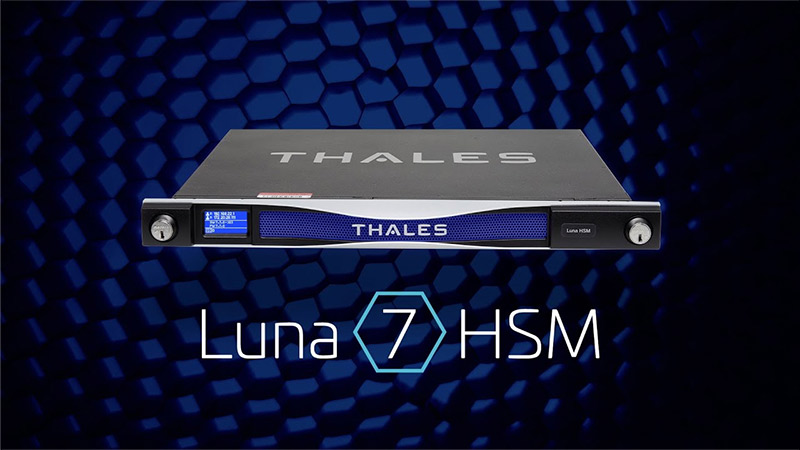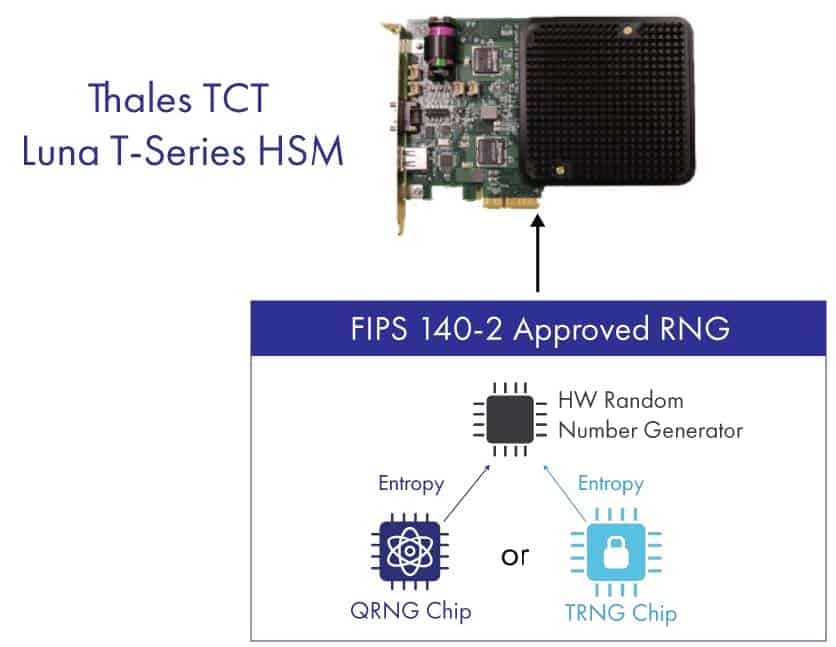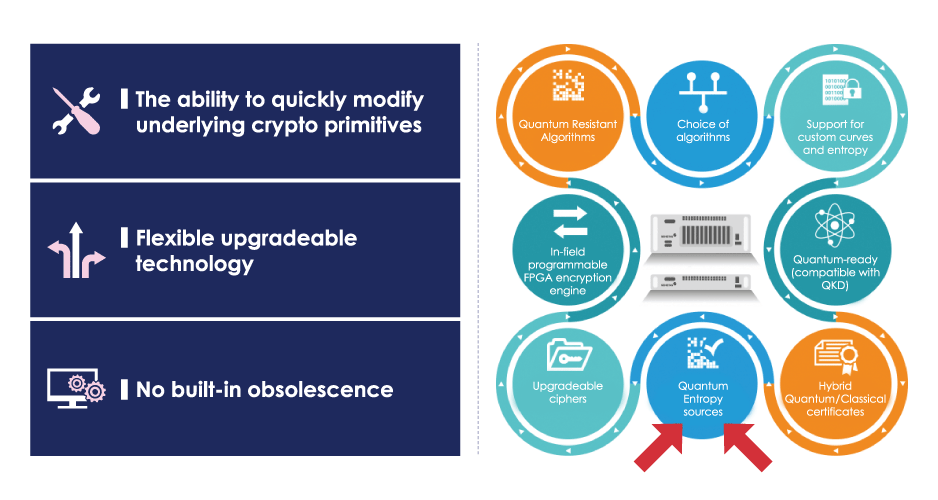Thales Trusted Cyber Technologies (TCT) has partnered with ID Quantique to provide high-assurance key protection backed by quantum randomness to secure organizations’ cryptographic infrastructure.
The joint solution combining the Luna T-series Hardware Security Modules (HSMs) and IDQ’s Quantum Random Number Generation (QRNG) is FIPS 140-2 Level 3 certified, NIST’S highest level of security standards.

HSMs are designed to protect our most valuable digital assets. As we live in ever-increasing connected world with an exponentially growing volume of data, it is crucial to get the foundation of our security right. We need the strongest and highest quality cryptographic keys; and we must obtain them through the most reliable and provably secure random number generation method: QRNG.
Luna Network HSMs from Thales TCT are the choice for government agencies when generating, storing, protecting and managing cryptographic keys used to secure sensitive data and critical applications.
The HSM protects cryptographic keys and handles the encryption and decryption processes. It manages the entire lifecycle of cryptographic keys, and can also create and verify digital signatures.
This high entropy and secure key storage solution addresses critical applications where high quality random numbers are absolutely vital such as: cryptographic services; numerical simulations; cloud; compliance; IoT-scale device authentication; and trusted digital signatures.

Thales TCT Luna T-series HSM was the industry’s first FIPS 140 certified HSM capable of generating Quantum Enhanced Keys by embedding IDQ’s QRNG chip within the Luna T7 cryptographic module.
Using principles of quantum physics, the QRNG chip produces high quality entropy which is the basis for all random numbers and cryptographic keys generated by the HSM. With a choice of operating the HSM in FIPS-approved mode using either the embedded, classic physical RNG or the embedded quantum RNG, customers can dynamically change between classical key generation and quantum enhanced keys as threats emerge over time.

This paradigm shift in cyber security forces organizations to rethink the way they protect their digital assets for the long-term future.
